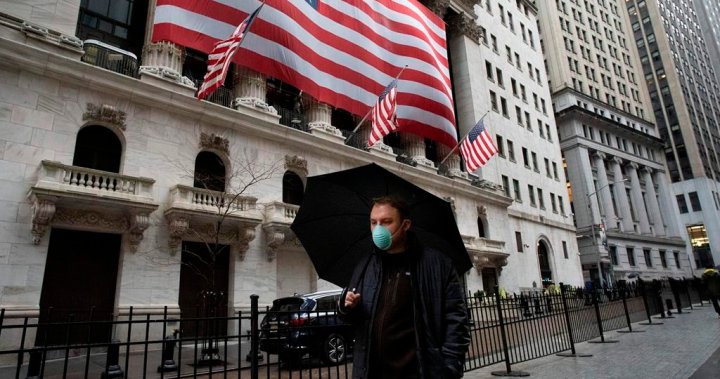
U.S. CDC relaxes COVID-19 mask guidelines for most Americans
Global News
The Centers for Disease Control and Prevention (CDC) is still advising that people, including schoolchildren, wear masks where the risk of COVID-19 is high.
Most Americans live in places where healthy people, including students in schools, can safely take a break from wearing masks under new U.S. guidelines released Friday.
The Centers for Disease Control and Prevention outlined the new set of measures for communities where COVID-19 is easing its grip, with less of a focus on positive test results and more on what’s happening at hospitals.
The new system greatly changes the look of the CDC’s risk map and puts more than 70% of the U.S. population in counties where the coronavirus is posing a low or medium threat to hospitals. Those are the people who can stop wearing masks, the agency said.
The agency is still advising that people, including schoolchildren, wear masks where the risk of COVID-19 is high. That’s the situation in about 37% of U.S. counties, where about 28% of Americans reside.
The new recommendations do not change the requirement to wear masks on public transportation and indoors in airports, train stations and bus stations. The CDC guidelines for other indoor spaces aren’t binding, meaning cities and institutions even in areas of low risk may set their own rules. And the agency says people with COVID-19 symptoms or who test positive shouldn’t stop wearing masks.
But with protection from immunity rising _ both from vaccination and infection _ the overall risk of severe disease is now generally lower, the CDC said.
“Anybody is certainly welcome to wear a mask at any time if they feel safer wearing a mask,” CDC Director Dr. Rochelle Walensky said in a news briefing. “We want to make sure our hospitals are OK and people are not coming in with severe disease. … Anyone can go to the CDC website, find out the volume of disease in their community and make that decision.”
Since July, CDC’s transmission-prevention guidance to communities has focused on two measures _ the rate of new COVID-19 cases and the percentage of positive test results over the previous week.

